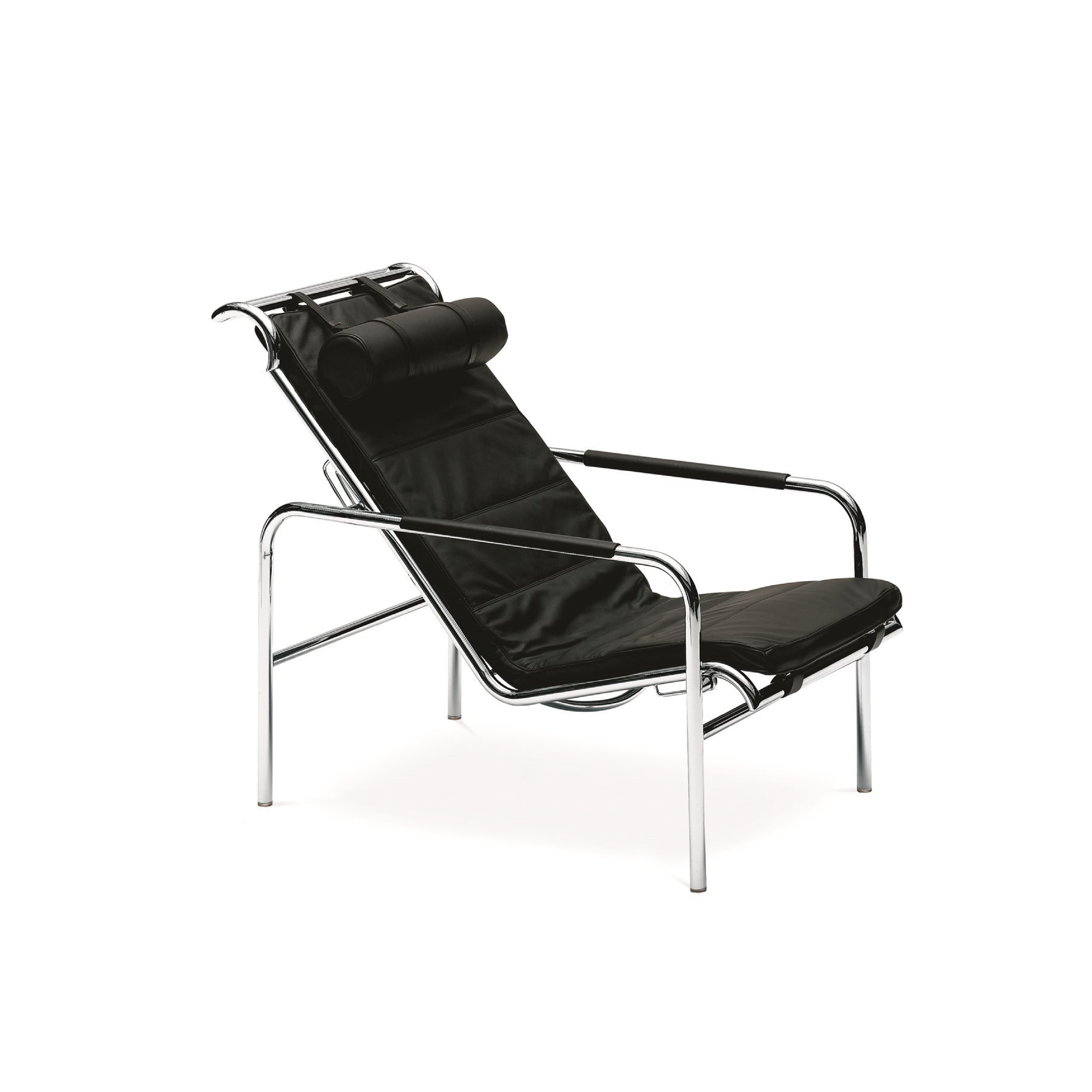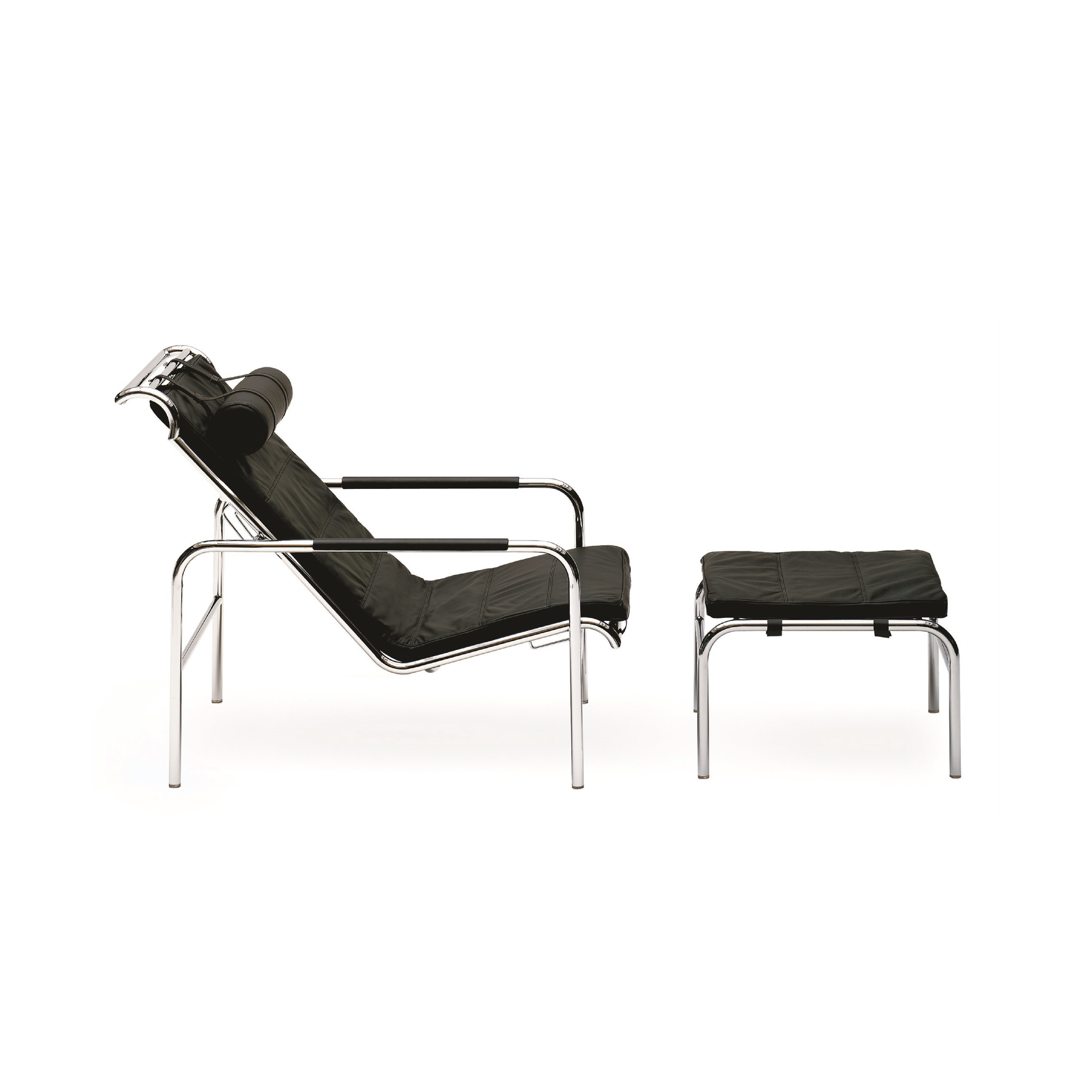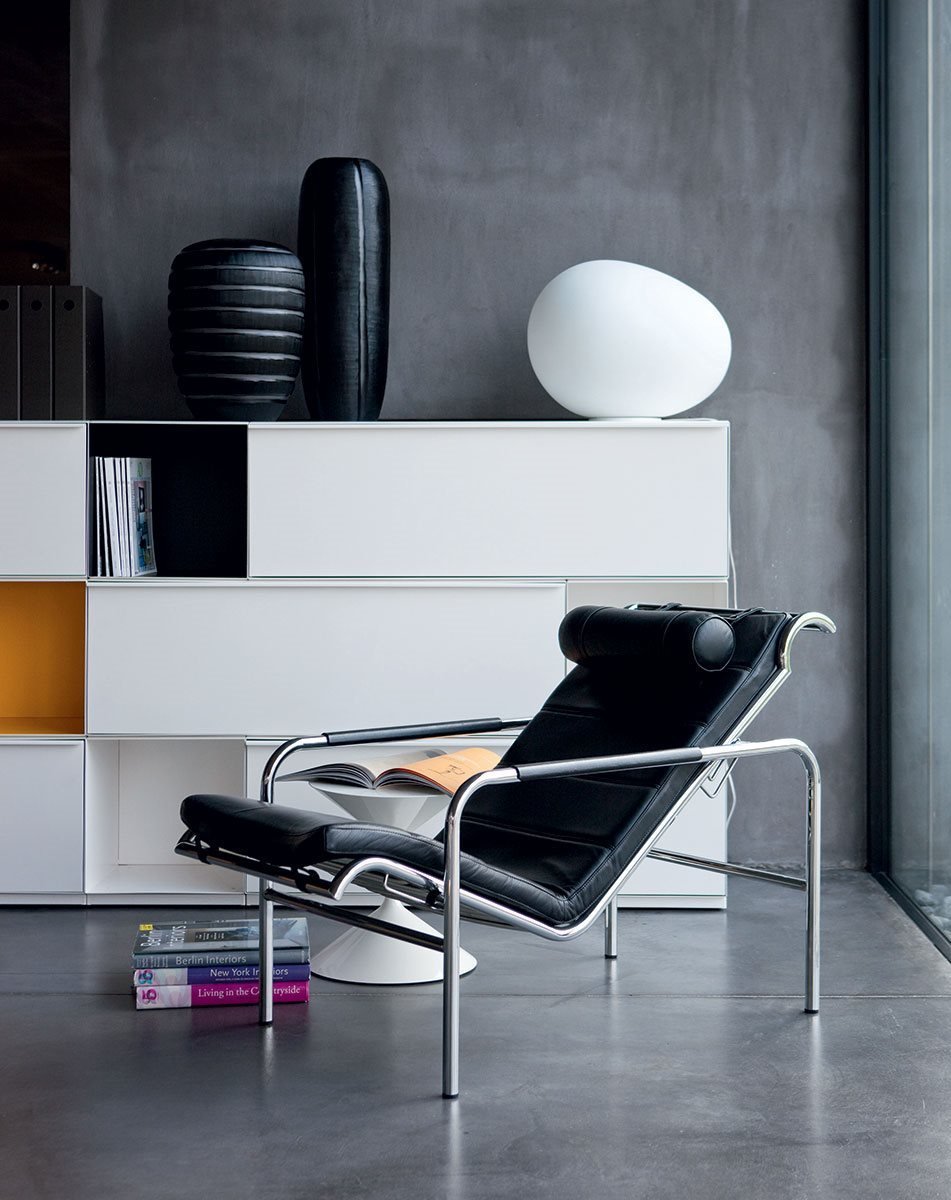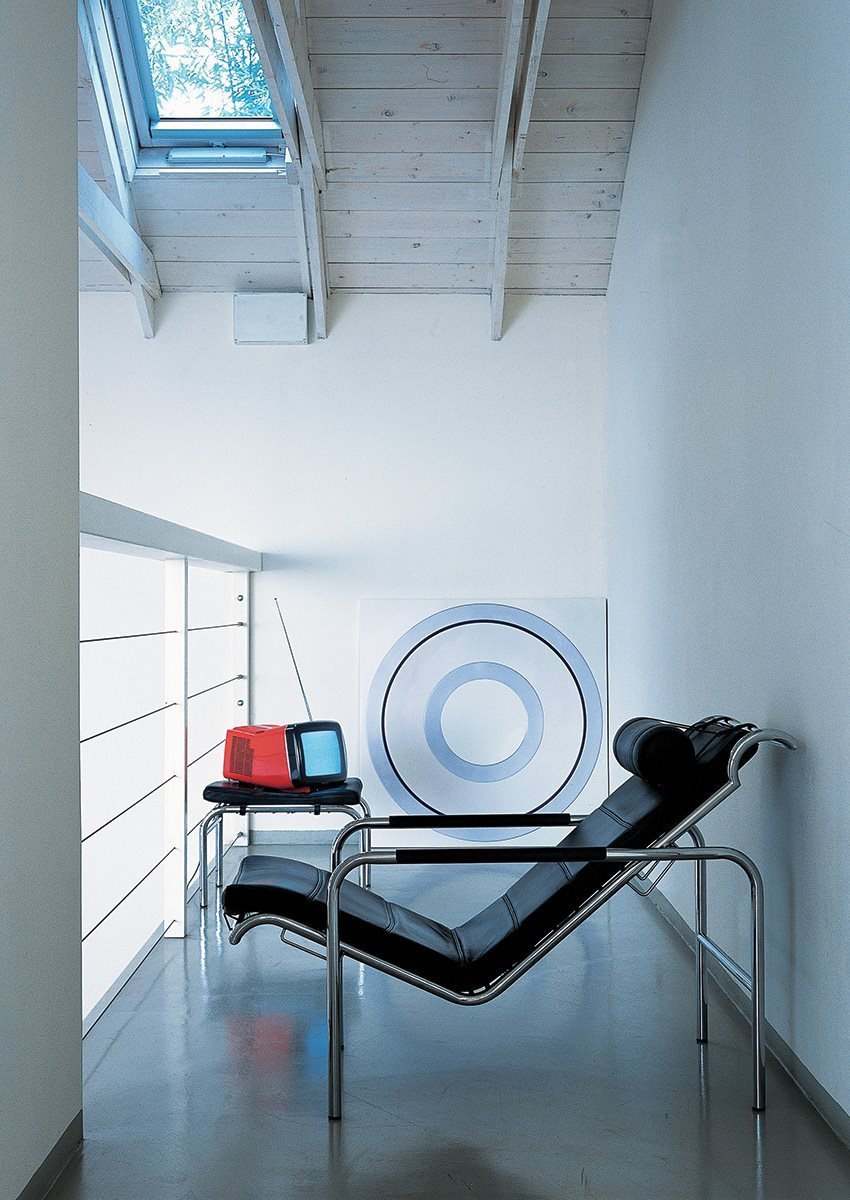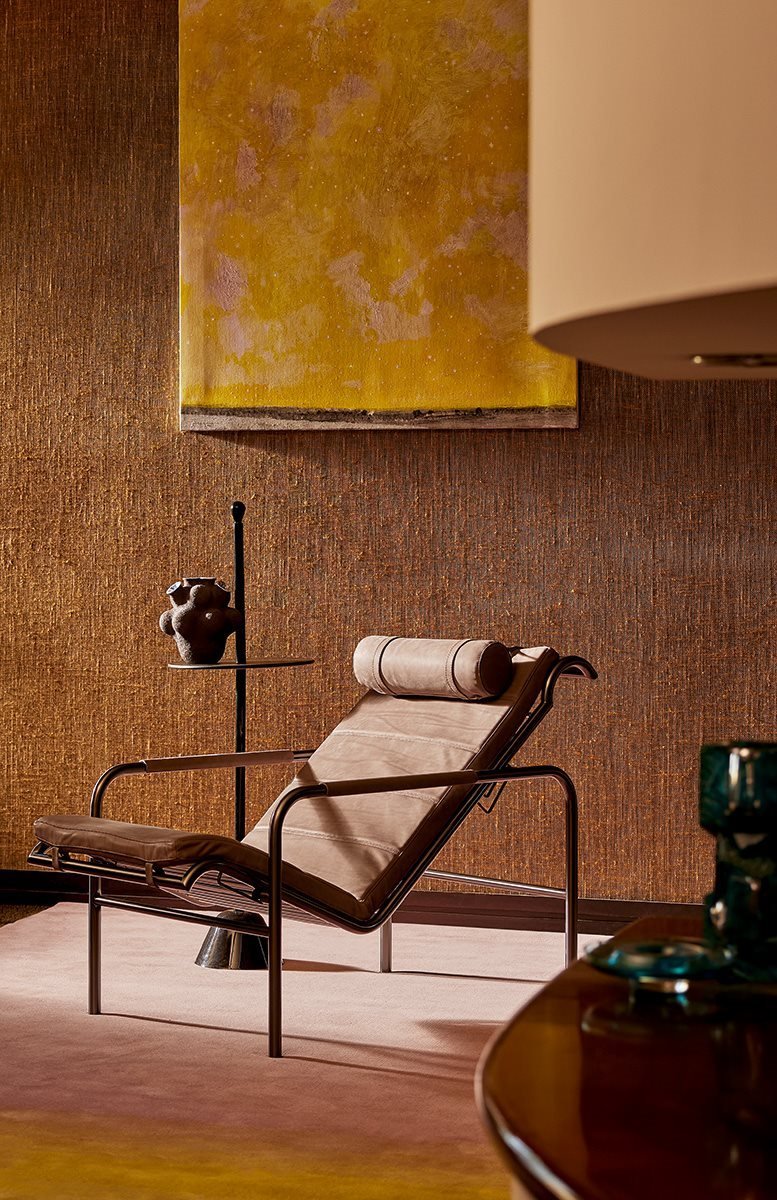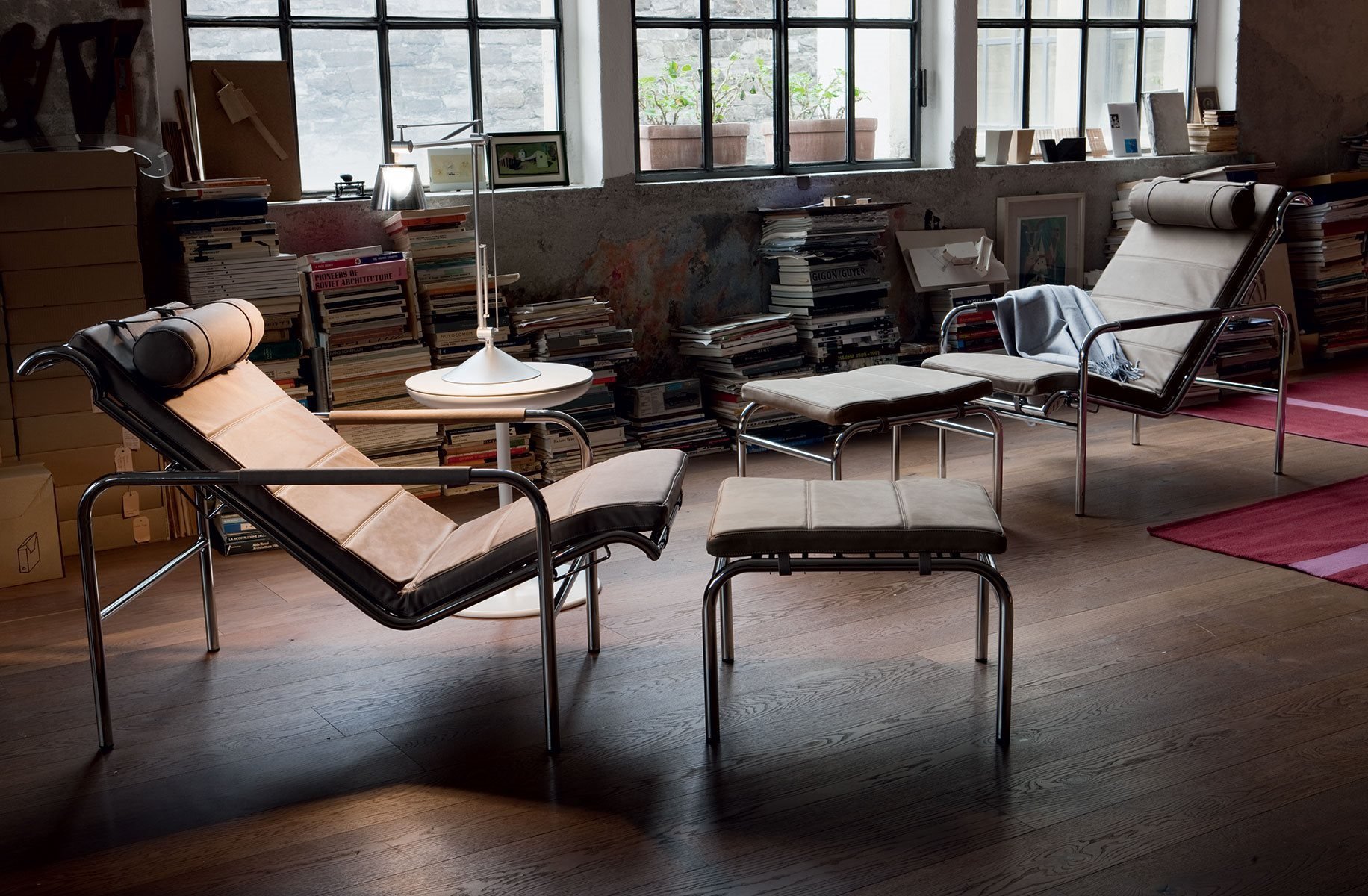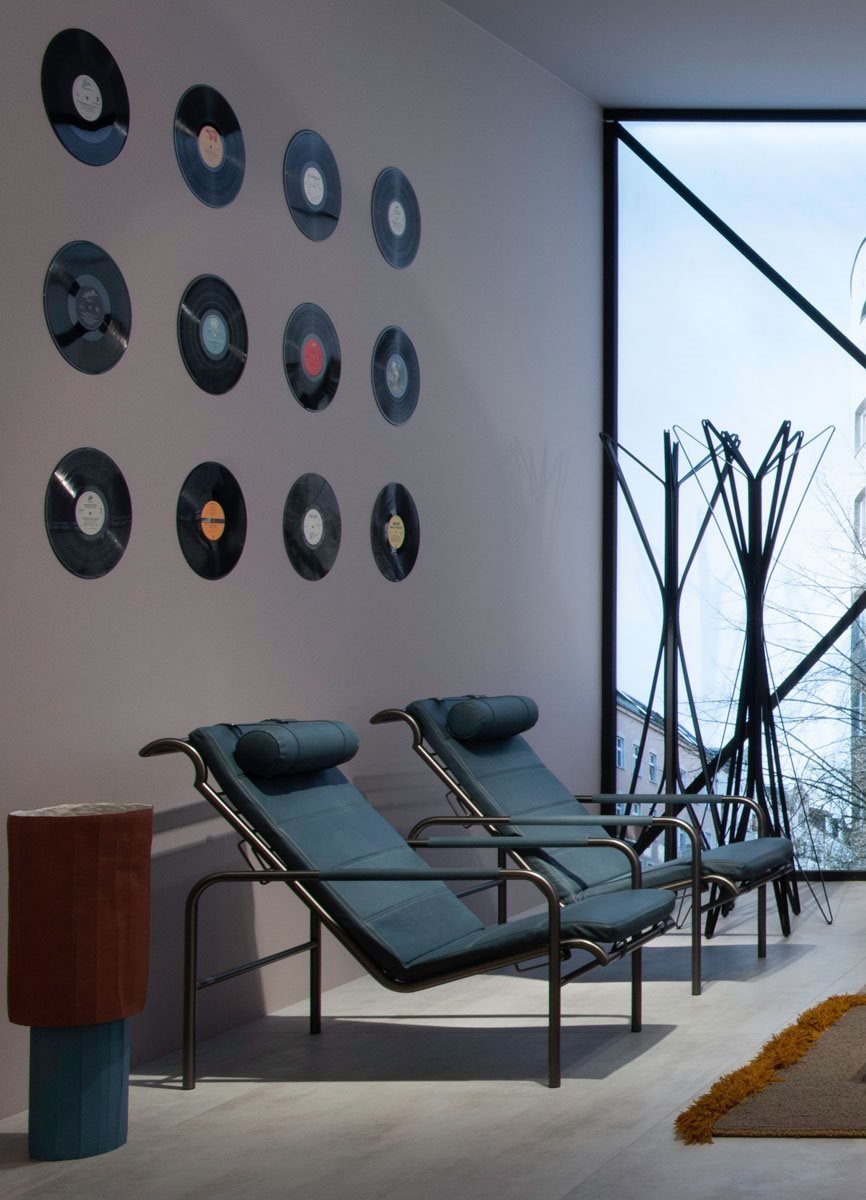experimental and refined
In 1982, among the re-editions, the Genni lounge chair - designed by Gabriele Mucchi in 1935 - entered the Zanotta catalogue. This item is striking in its formal elegance and surprising continuous modernity. It is made of bended and chromium-plated steel tube, a material symbol of the language of designers belonging to the movement of rationalist architecture, that at the beginning of last century had experienced the first new project opportunities offered by the nascent industry of modern furniture.
Born in Turin in 1899, he was an engineer and a painter, working in Milan, Berlin and Paris. Upon his return to Milan he played a lead part in the avant-garde movements of that time, from “Corrente” to the Realist Movement; he helped found the latter and was a cardinal figure in it. He had a creative and functional role in the Milanese group of Rationalist architects. He worked with Bottoni, Lingeri and Terragni on competitions and courageous built works. He took part as painter or architect in various Milan Triennale. In 1934 he created the Via Marcora house, one of Milan's earliest examples of Rationalist architecture. In 1935 he designed and built some metal furniture. He was a member of CIAM and MSA.Along with Piero Bottoni he contributed to the experimental district, QT8, where he had a prefabricated house erected in 1947, helping to draw up Milan's master plan.
After 1955 he devoted himself exclusively to painting; from 1956 to 1961 he taught at the Academy in East Berlin and the University of Greifswald. In 1960 he briefly took up architecture again. His exhibition path was outstanding in both public and private institutions in Italy and abroad.
Lounge chair. Chromium-plated steel frame with natural, nickel-satin finish, or black nickel-satin finish, or lacquered in orange or black. Suspension on steel springs. Adjustable seat in two positions. Cushion and headrest upholstered. Leather-covered cushions and armrests.

